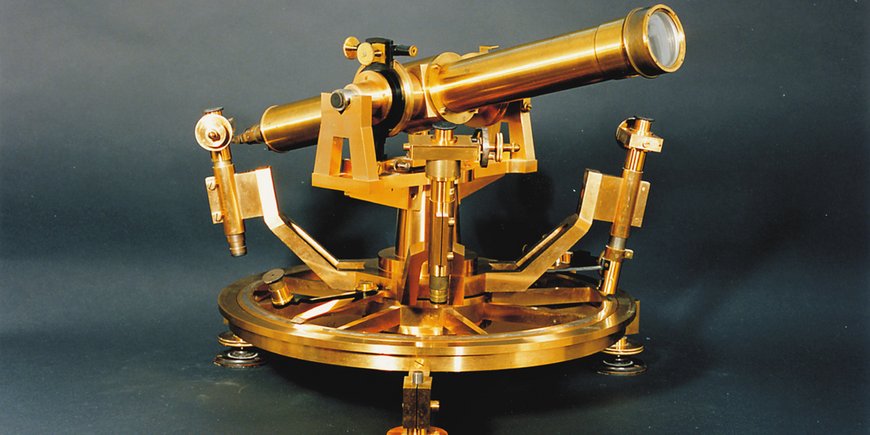150 Years of Internationale Cooperation in Geodesy: Anniversary Assembly of the International Association for Geodesy
More than 520 scientists of geodesy from 53 countries meet in Potsdam on a special occasion: the Scientific Assembly 2013 of the International Association of Geodesy (IAG) celebrates the 150th anniversary of the IAG quasi at its birthplace. The meeting is organized by the GFZ German Research Centre for Geosciences from 1st till 6th of September, 2013 in the Dorint-Hotel. Around 500 talks and posters will be presented. A historical event with talks about the development from 1862 until today with guided tours and an exhibition will take place on Wednesday, 4th of September in the afternoon at the GFZ on Telegrafenberg hill. Topics include geodetic reference systems as the basis for all kinds of precise navigation and positioning (needed for cadastral survey, engineering geodesy and many other applications), Earth’s gravity field and its fluctuations in time as a function of mass distribution within Earth, the observation of geophysical hazards e.g. by earthquakes and tsunami, the analysis of geodynamic processes in global change as well as technical processes and applications in geodesy.
The History in Berlin and Potsdam
The International Association of Geodesy (IAG) regards the time span between 1862 and 1864 as its foundation period and therefore celebrates its four-annually meeting from 2nd till 6th of September, 2013 as an anniversary assembly on the occasion of its 150th birthday in Potsdam. On 24th till 26th of April, 1862 by invitation of the Prussian General Lieutenant Johann Jacob Baeyer, a preliminary discussion for a „Central European Arc Measurement” project was held in Berlin with representatives from Austria and Saxony. By the end of that year fifteen countries had affirmed their participation, and on October 15th, 1864 the first General Conference was held in Berlin. The project was enlarged to an “International measurement of Earth” in 1886 with a worldwide participation. General Baeyer’s project is considered the forerunner of today’s International Association of Geodesy (IAG). The IAG is a foundation association of the International Union of Geodesy and Geophysics (IUGG), established in 1919.
Johann Jacob Baeyer founded a Geodetic Institute in Berlin, although without an own building and infrastructure. His successor, Friedrich Robert Helmert, in 1892 transferred this institute to the Telegrafenberg hill in Potsdam which was considered as the world’s centre of geodesy in that time. Here the value of Earth’s gravity was measured from 1898 to 1904 with pendulum instruments and was accepted as „Potsdamer Gravity Value“ as the international reference from 1909 until 1971. Today at the same place, Earth’s gravity is researched with satellites (CHAMP, GRACE, GOCE).
More information can be found on: www.iag2013.org
An exhibition accompanies the assembly: „Von der Pendelmessung zur GRACE-Mission - Zur Geschichte der Geodäsie auf dem Telegrafenberg in Potsdam“.
30. August to 27. September 2013 in the library of the science campus Albert Einstein on Telegrafenberg Hill
<link portal cms bibliothek rssdocuments docausstellung>www.gfz-potsdam.de/portal/cms/Bibliothek/RSSdocuments/docAusstellung








![[Translate to English:] Torsten Sachs in front of a climate station on a field](/fileadmin/_processed_/3/9/csm__TorstenSachs_bearbeitet_GS_4a1365ef84.jpeg)

![[Translate to English:] left image flood at the Ahrtal: image from above, several houses are flooded; left image:: Heidi Kreibich;](/fileadmin/_processed_/4/4/csm_Bild2_9af0130e9f.png)



![[Translate to English:] Start der Vega Rakete](/fileadmin/_processed_/6/4/csm_20231201-kachel_Vega-VV23-launch_ESA-CNES-Arianespace_706716b68c.jpeg)









![[Translate to English:] Poster exhibition at the Brandenburg Hydrogen Day at the GFZ, some participants in the foreground](/fileadmin/_processed_/6/5/csm_Erster_Brandenburgischer_Wasserstofftag_GFZ_402fcec95e.jpeg)
![[Translate to English:] Group picture of the participants](/fileadmin/_processed_/9/4/csm_20231108_CAWa-Workshop-Tashkent_Gruppenbild_99ea779d8a.jpeg)

![[Translate to English:] [Translate to English:] Hörsaal](/fileadmin/_processed_/e/6/csm_H%C3%B6rsal_e21ac645fb.jpeg)


![[Translate to English:] The Delegations in the Historic Library on the Telegrafenberg. In the back there are from left to right, the Dutch Ambassador for Germany, Ronald van Roeden, the Dutch Minister for Education, Culture and Science, Robbert Dijkgraaf and the scientific director of the GFZ, Susanne Buiter.](/fileadmin/_processed_/d/b/csm_Kachel-2_9eba4b4212.jpeg)

